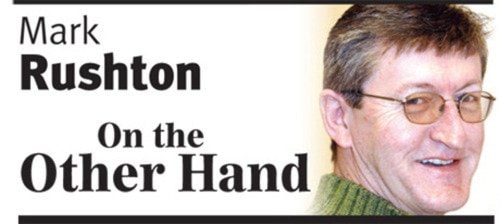The recent media frenzy over a hockey player killing a grizzly bear for trophy purposes, taking the head and hide while leaving the carcass, needs to be put somewhat into perspective.
Grizzly bears are shot only for trophy purposes. Their meat is, at least for human consumption, generally inedible. For natural scavengers, however, the abandoned carcass is a veritable buffet.
You will note that I did not use the word “hunting” in the above, simply because I believe zipping in and out of coastal estuaries in an inflatable boat, looking for grazing grizzlies isn’t so much hunting as it is high-speed cruising for opportunity.
Hunting should be ‘fair chase,’ in that you have to work for what you kill. “Hunting” by boat or other vehicle, fairly rapidly roaming vast areas with great sight lines is not hunting so much as it is shooting sitting ducks.
Clouding what has become a debacle over this grizzly kill is that a First Nations person claimed the animal was his “friend” and he’d even given it a name.
Anyone who claims grizzlies are friendly, and intimate they are almost tame, is out of touch with reality. In fact, what they are doing by supposedly interacting with these wild animals is to habituate them to human contact, and with hunting of them still permissible, makes them extremely vulnerable to human predation.
But this isn’t about the niceties or vulnerability of bears so much as it is about hunting ethics. If one is to hunt such an animal, then he/she should walk to the area as did the bear, risking contact rather than safely shooting them from a boat, or the beach delivered by boat.
The same, with another vehicle, can be said of moose hunting in the Cariboo. Thanks to vast tracts of clear-cut, laced with access roads, created by “salvage logging” to take advantage of pine-beetle infested forests, instead of the moose population growing through the bounty of new browse, they are being decimated.
Huge clear-cuts, where moose like to nibble on new willow and poplar growth, open up sight lines for predators – both wolf and human. Instead of following their noses, wolves can spot moose calves from literally miles away, home in on their locations and execute easy and frequent kills.
So it seems can humans, particularly with scope-sighted rifles that allow success from beside a pickup truck a half a mile away.
The problem, however, is not so much with the hunter who holds a limited entry permit during hunting season – the kill rates on those are strictly controlled.
The problem is poaching and, as I have recently read, First Nations “sustenance hunters” who are killing bulls, cows and calves year round. Natives are permitted by law to do that – to take as much as they want, as often as they want, no matter the time of year.
When the land was covered by forest, the animals usually found in hard-to-access moose meadows or old, deactivated clear-cuts, that type of liberal hunting opportunity might be sustainable.
In the open and accessible vastness that is much of backcountry Cariboo, that is no longer the case.
Moose populations are only 30 or 40 per cent of what they were a few years ago, and the rapid decline continues.
If there is to be consideration of banning or restricting trophy hunting of great bears, perhaps government also needs to work with First Nations to ensure there is a sustainable hunting program for moose – sustenance or otherwise.
Without some action soon this iconic animal may be extirpated for generations in central British Columbia.
markrushton@abbynews.com
